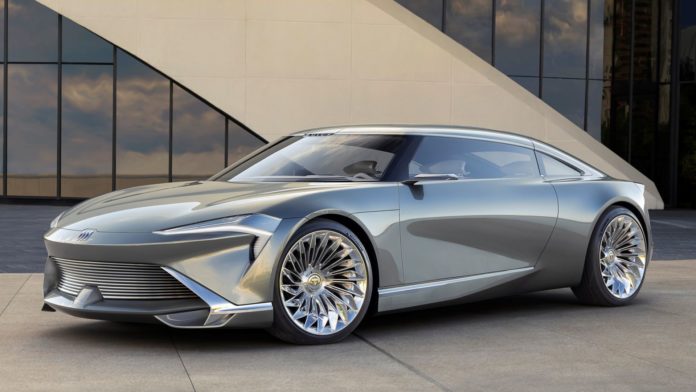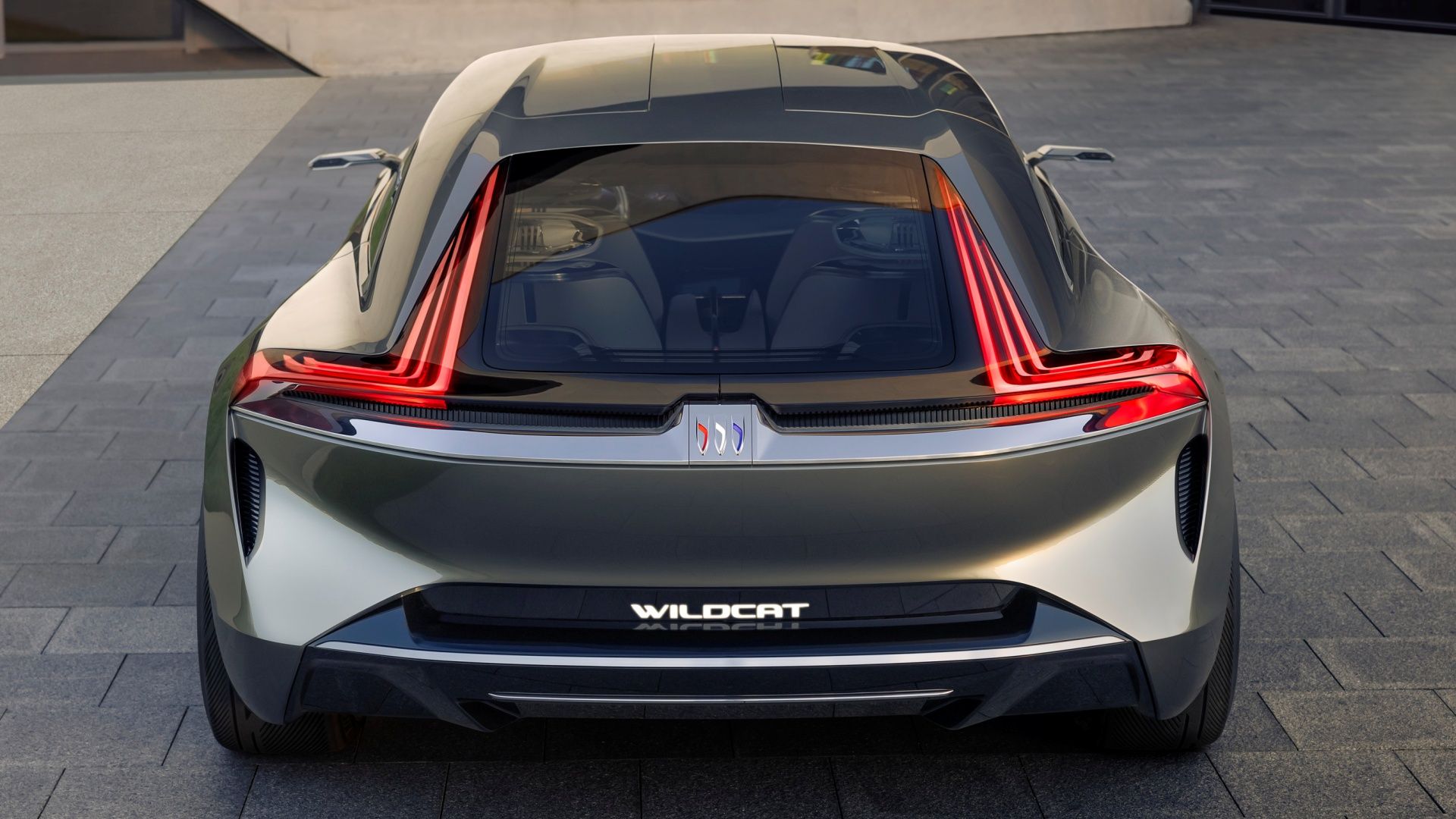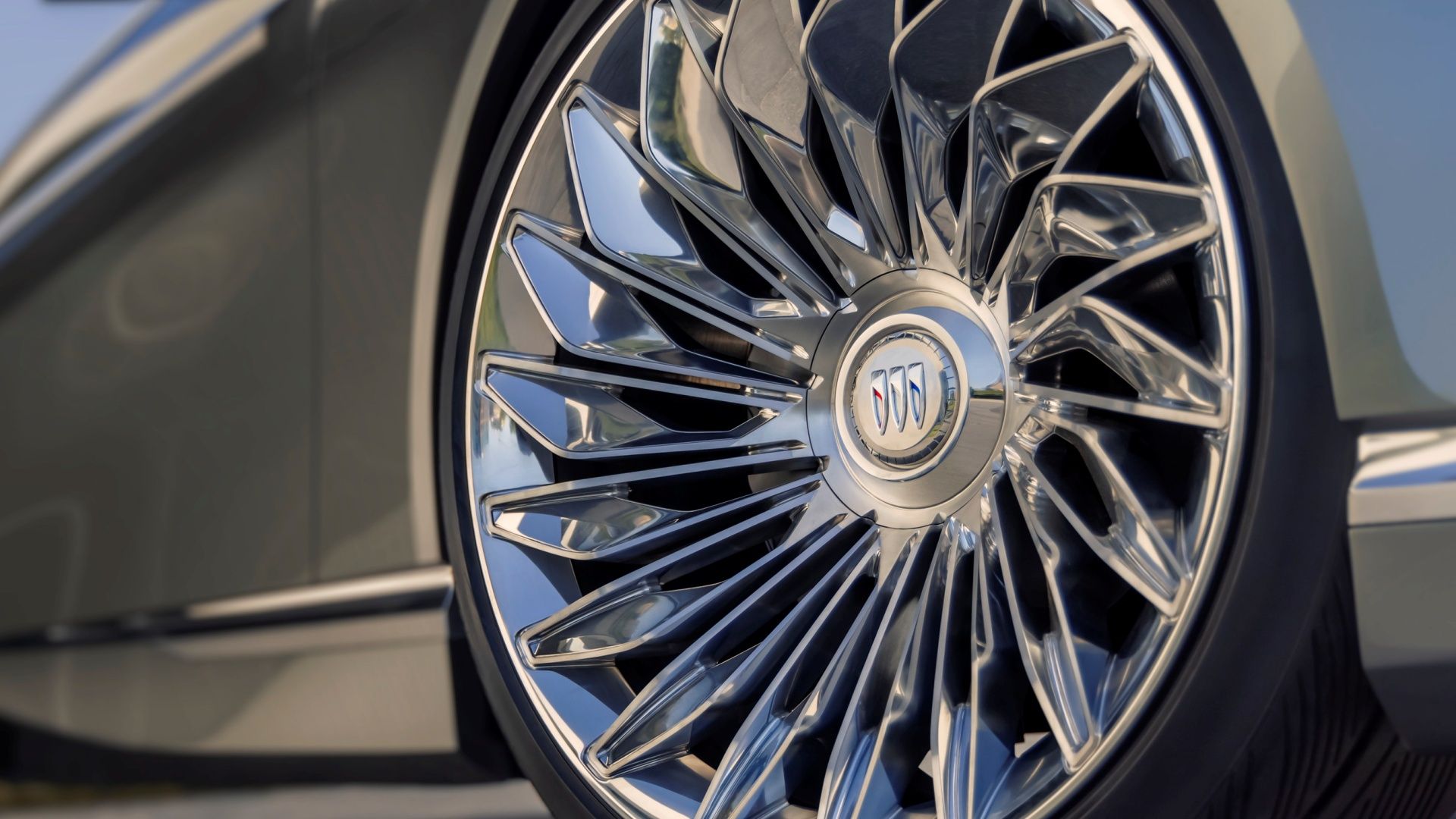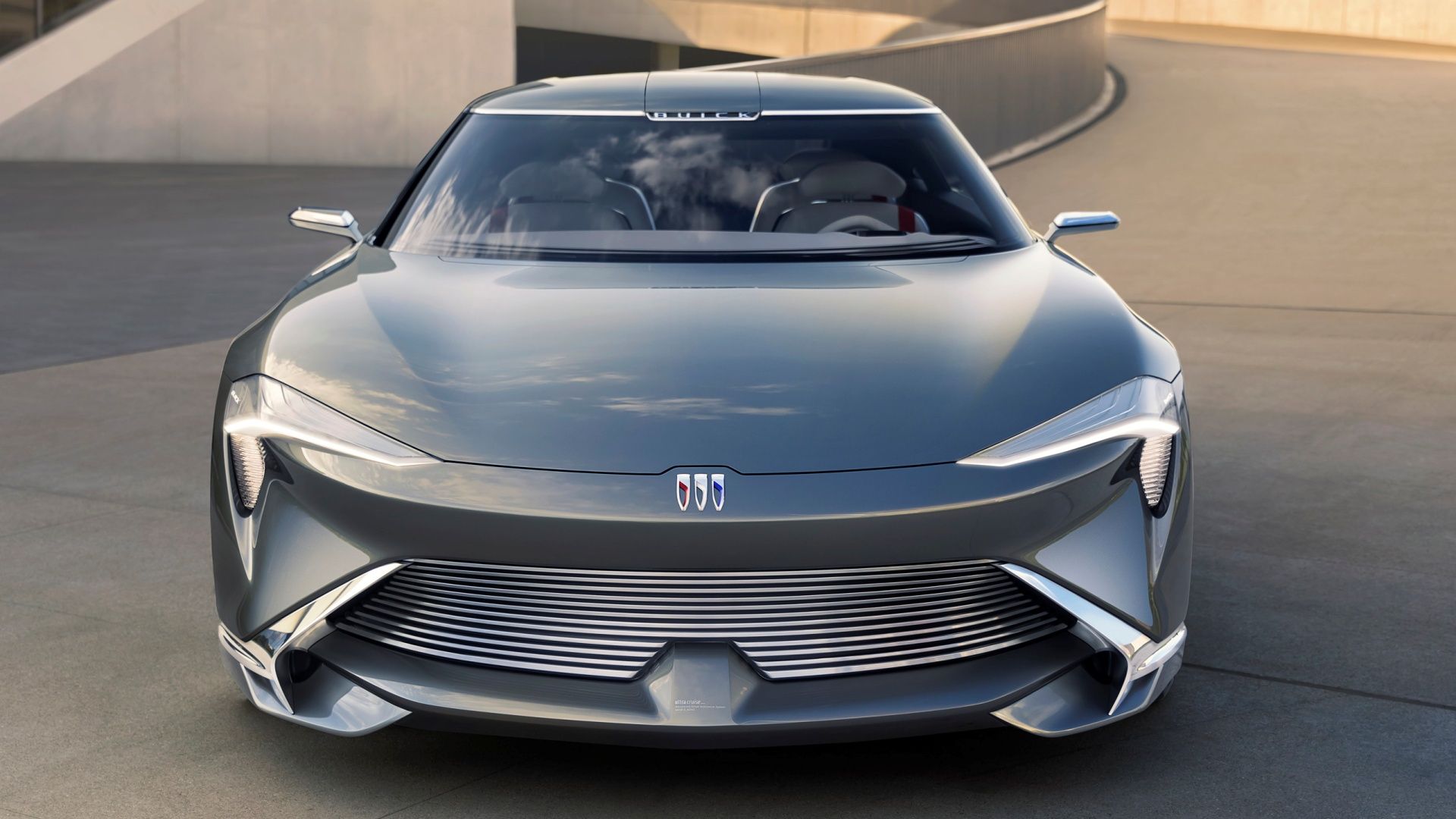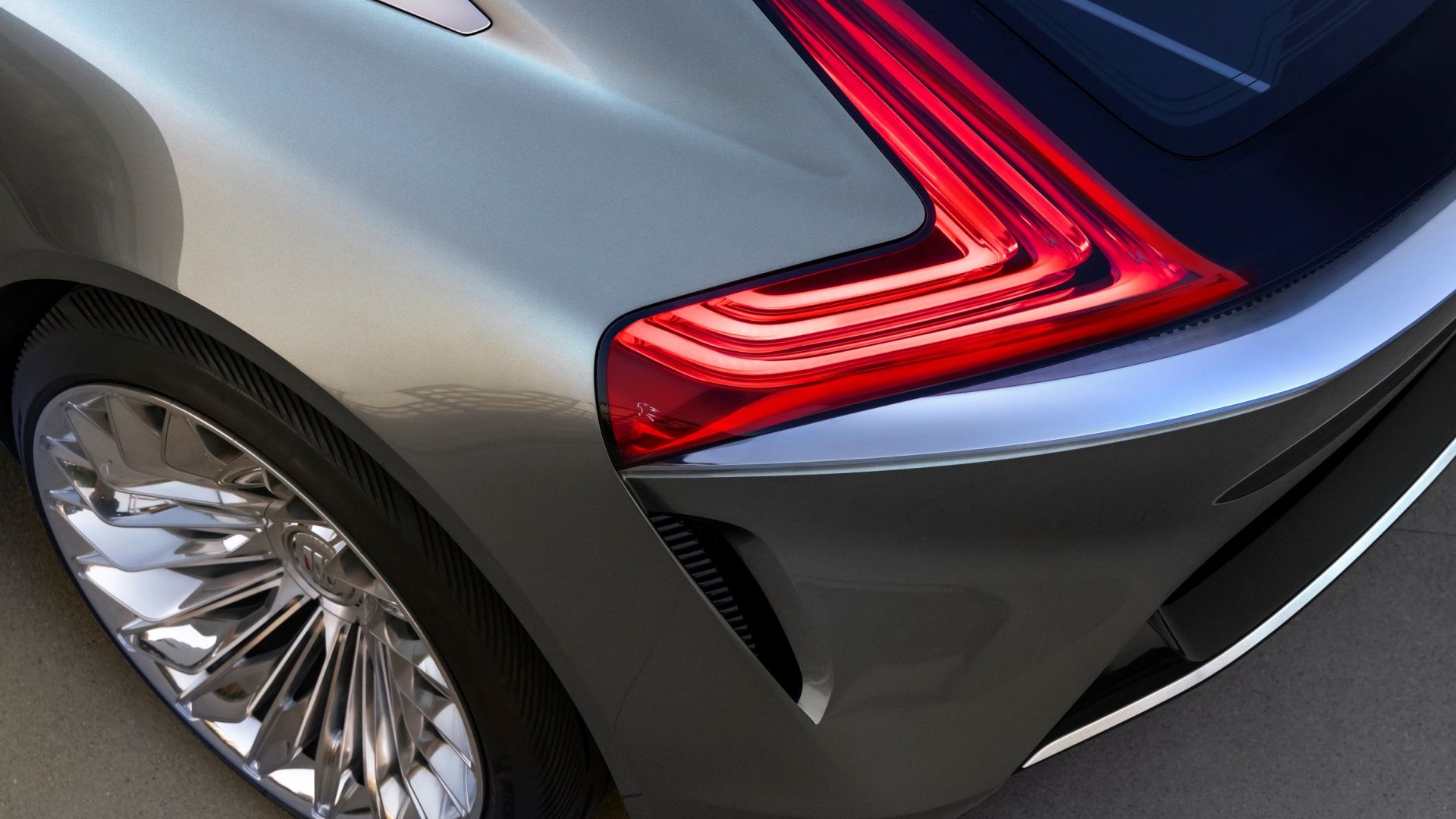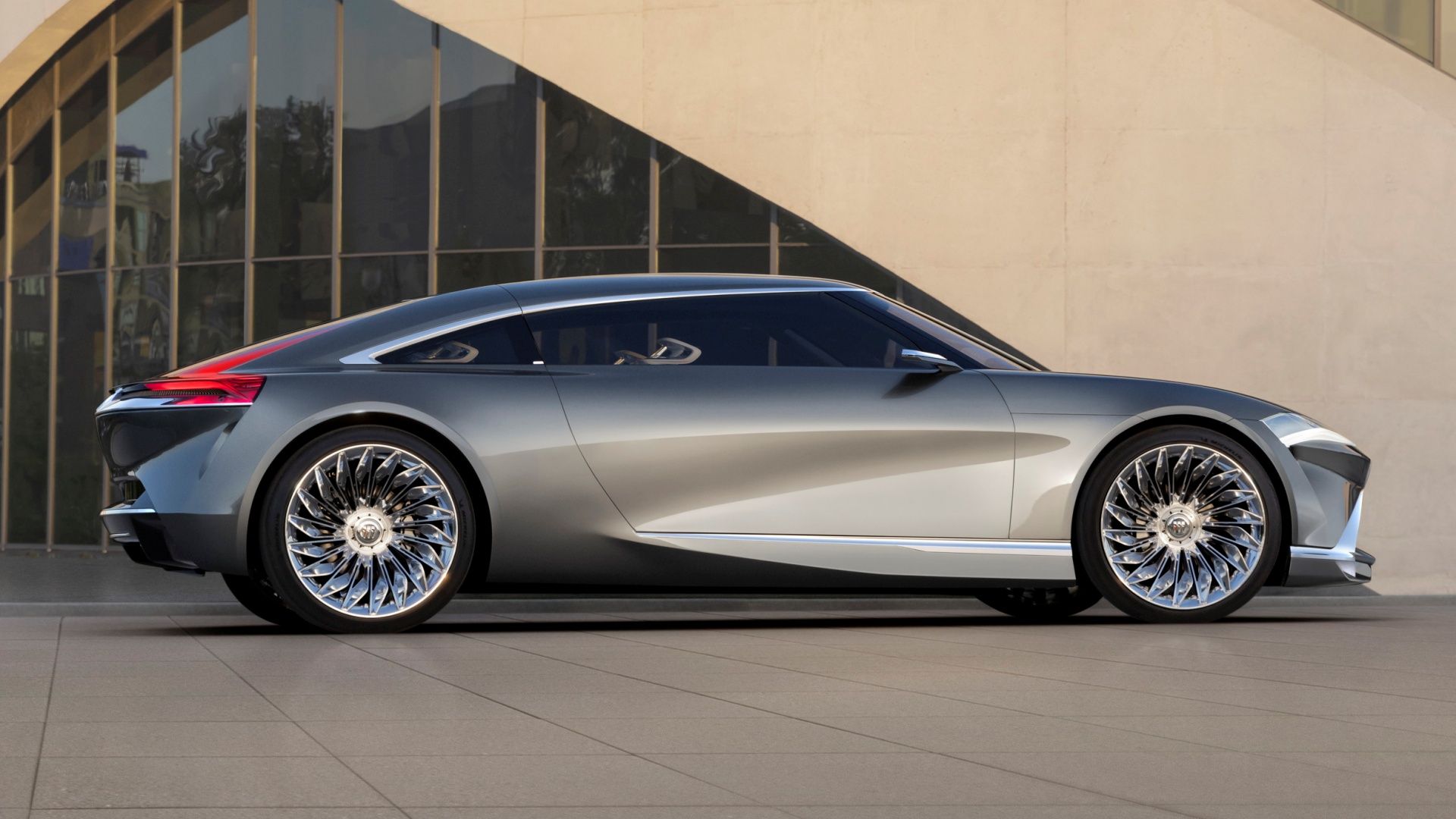Key Takeaways
- Wildcat concept started from a young designer’s basic sketch
- Buick’s new design language honors its past while embracing the future
- Designs will continue to evolve with the introduction of each new model
Good design makes you fall in love with a car. It puts a smile on your face and makes you want to get in and drive. It’s a key part of a brand’s identity and reflects countless hours of work by talented teams of creative people.
Changes to a brand’s design language aren’t undertaken lightly. They require a careful balance, staying true to the brand’s heritage while moving it forward to embrace the future. Buick is in the midst of rethinking its design language and flew us to Michigan to see its new design center and hear directly from the people behind Buick’s new look.
The Tri-Shield Logo
The new look started with the first update of the Buick tri-shield logo since 1990. It still has the three shields in red, white, and blue, just with slightly different positioning and no circle enclosure. That one simple change was met with a mix of cheers and jeers by the public, and it was just a badge. Change is risky.
Next, Buick revealed the Wildcat EV concept, which was, in fact, pretty wild. Bob Boniface, Director of Exterior Design, told us how that concept came to be. “One young designer did this sketch. It ended up becoming the Wildcat, but I saw the sketch and it had that low mouth and badge mounted on the body and these slim lamps. It was so simple, but it really caught my eye, and I thought it was something that could revolutionize or transform the face of the brand.”
From Concept to Production
It did exactly that, with hints of that concept now appearing in the latest Buick vehicles, from the Encore GX to the new three-row Enclave. Getting the Wildcat concept built was a process that took three years. Bringing production models to customers is even more complex, which makes keeping designs fresh by the time they hit the market a challenge.
“It takes a long time, so it’s tough to place your bets and predict where the market’s going to be three years down the road, four years down the road. And that’s why design is so important. Designers need to have a point of view,” said Boniface.
Mark Reuss, President of General Motors, stopped by the Design Dome and shared his excitement about the work being done. “Bob and the team have done a wonderful job over the last couple of years on bringing life back into Buick Design, which is very passionate for many people here, including myself,” he said.
Immersed in Automotive
Making the right design decision requires looking into an imaginary crystal ball and having a solid knowledge of what’s on the road today. “Every designer in this building can tell you every single car, make, model, segment on the road,” added Boniface.
It all comes down to not doing trendy details but doing things that have design substance. – Bob Boniface, Director of Exterior Design, Global Buick
A solid grasp of the competition helps designers see the trends and decide when they should be ignored. “We don’t want people to buy it this year and two years or three years later have this car look old and move on to the next thing,” said Boniface. “We want Buicks to look good for a long time – timelessness.”
The EV Challenge
Electric vehicles pose unique challenges. Aerodynamics are more important than ever to maximize range, but the design focus is on one thing. “The big news on EVs is in the front,” said Boniface. “You still need to take in air for the battery and the onboard electronics, but you don’t need as much open air as you do in an internal combustion engine.” It’s easy to see the impact of EVs on design with many sporting flat, featureless sheets of metal where there were once beautiful grilles.
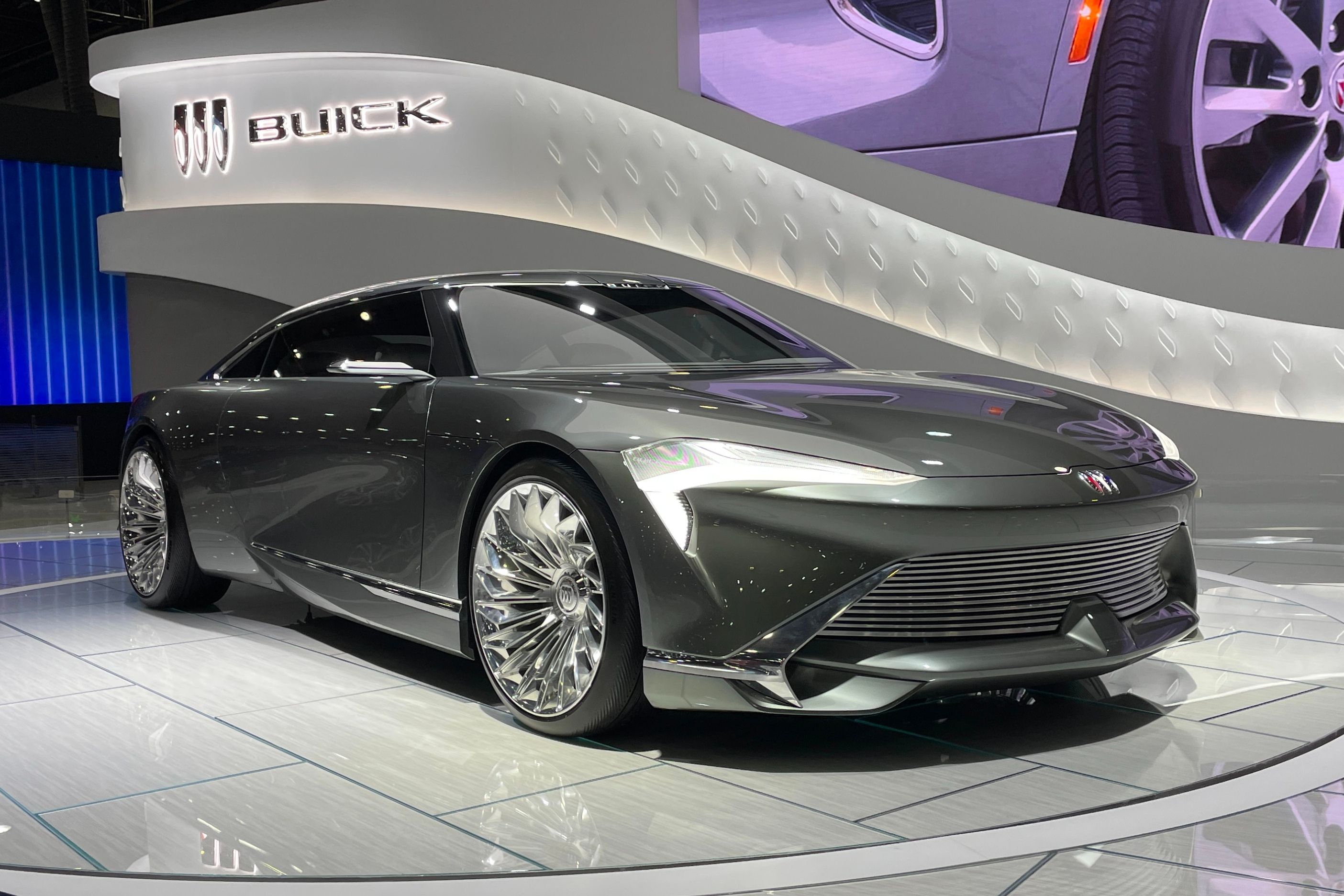
Related
The Stunning Wildcat Proves Buick Can Build Beautiful Cars Of The Future
We take a closer look at the Buick Wildcat at the Detroit Auto Show.
Boniface doesn’t think that’s the best idea. “Just because you can remove the mouth of the vehicle doesn’t necessarily mean you should because people still identify the front end of the vehicle, seeing it as a human face in some ways.”
Timeless Design
It’s tough to say exactly where the future of Buick design will go. It’s a constantly evolving process with ideas about how things should look changing with the times. “Does an EV need to scream that it’s something other than an internal combustion vehicle, or does it just need to seem like a beautiful car that just happens to be an EV?” said Boniface. “I would say 10 years ago, when EVs were still very new, you wanted to tell the world, I’m driving something different. Now that EVs are more ubiquitous. I don’t know that that message needs to be as strong.”
Whatever the future brings, Boniface is certain the designers at Buick are up to the challenge. “We’re very confident in our abilities to design something that’s beautiful, that won’t just be temporarily beautiful. We talk about trying to have a timeless design language. That’s what the great brands do, and that’s what we’re very good at here.”

